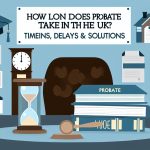Table of Contents

Key Takeaways
- Asset protection trusts can shield your wealth from creditors and legal claims.
- UK law provides a framework for creating trusts that can safeguard assets for future generations.
- Understanding the types of assets that can be held in a trust is crucial for effective estate planning.
- Setting up an asset protection trust involves selecting the right type of trust and understanding the legal process.
- Asset protection trusts offer benefits such as tax efficiency and control over how your estate is managed and distributed.
Why Protect Your Wealth with a Trust?
Think of a trust as a safety deposit box where you can keep your valuables. Once you put something in, it’s safeguarded, and only specific people you’ve chosen can access it. In legal terms, it means that the assets you transfer into a trust are no longer yours; they belong to the trust. Because of this, creditors or anyone else who might want a piece of your pie will have a much harder time getting to them.
The Basics of Asset Protection Trusts
Asset protection trusts are not just for the rich and famous. Anyone concerned about their estate facing claims should consider one. These trusts are legal arrangements where you transfer your assets to a trustee, who then manages them for your beneficiaries—like your children or other loved ones. The key here is that these assets are now separate from your personal estate, which means they’re out of reach from creditors and other claims.
Risks to Your Estate Without a Trust
Without a trust, your assets are like a house without a fence—vulnerable. Creditors can come knocking for various reasons: business debts, divorce settlements, or unforeseen lawsuits. And if they get a court order, your estate is up for grabs. Besides that, your wealth could be significantly eroded by taxes or mismanagement after you’re gone. A trust helps to prevent these risks by legally protecting your assets.
Setting Up Your UK Asset Protection Trust
So, you’re convinced a trust is the way to go. Great decision! Now, it’s all about setting it up correctly. The process involves a bit of paperwork and some important decisions, but I’ll walk you through it step by step.
Choosing the Right Trust for Your Needs
First things first, not all trusts are created equal. You’ve got to choose the one that’s right for your situation. There are several types of asset protection trusts in the UK, including discretionary trusts, where the trustees decide how to use the assets for the benefit of the beneficiaries, and interest in possession trusts, which give beneficiaries the right to income from the trust.
The type of trust you choose will depend on your goals. Do you want to provide for your children’s education? Are you looking to protect a family business? Or maybe you’re concerned about a beneficiary’s ability to manage money. Your objectives will guide the choice of trust.
The Process: How to Get Started
Setting up a trust is not a DIY project. You’ll need professional advice from a solicitor who specializes in trusts and estate planning. They’ll help you:
- Identify the assets you want to protect.
- Choose the right type of trust.
- Select trustworthy trustees—these could be family members, friends, or professionals.
- Draw up the trust deed, which is the legal document that sets out the rules of the trust.
Remember, the trust deed is the foundation of your trust, so it needs to be rock solid. It outlines what the trustees can and cannot do, who the beneficiaries are, and how and when they’ll benefit from the trust.
And there you have it, the first steps towards securing your legacy with a UK asset protection trust. In the following sections, we’ll dive deeper into how these trusts work in real-life scenarios, navigate the legal landscape, and make sure you’re getting all the benefits while staying compliant with UK laws.
Asset Protection Trusts in Action
Let’s bring the concept of asset protection trusts to life with some examples. Imagine you’ve built a successful business from the ground up. It’s not just your livelihood; it’s your legacy. But businesses can be risky, and if things go south, you don’t want your personal assets to be on the line. By placing some of your assets in a trust, you create a legal barrier between them and any business liabilities.
Case Study: Preserving Family Wealth from Creditors
Consider the Smiths, a family who had significant rental property investments. They were concerned about potential lawsuits from tenants and the impact of these on their personal wealth. By setting up an asset protection trust, they were able to separate their personal assets from their business operations. When a tenant filed a lawsuit, the assets in the trust were not part of the legal battle, thus preserving the family’s wealth.
Asset protection trusts can be a lifeline for families like the Smiths, providing a shield for their personal assets against the risks associated with business ownership.
Real-Life Scenarios: When Trusts Make a Difference
Trusts aren’t just for business owners. They can also be crucial in personal situations. Take, for example, a young heir who’s not yet financially savvy. A trust can ensure that their inheritance is managed wisely until they’re ready to take the reins. Or consider a family member with special needs; a trust can provide for their care without affecting their eligibility for government assistance.
Navigating UK Legal Landscapes
The UK legal system provides a robust framework for asset protection trusts, but it’s important to navigate it correctly. The laws governing trusts are detailed and can be complex, so it’s crucial to have a clear understanding to ensure your trust is set up and administered properly.
Understanding Trust Laws and Regulations
UK trust law is a mixture of statute and case law, with the Trustee Act 2000 being a key piece of legislation. It outlines the responsibilities of trustees and gives them the authority to manage the trust in the best interest of the beneficiaries. Additionally, the Inheritance Tax Act 1984 and the Finance Act 2006 have implications for how trusts are taxed.
When setting up a trust, you must ensure it’s compliant with these and other relevant laws. Non-compliance can lead to legal challenges, penalties, or the trust being deemed ineffective. Therefore, it’s not just about creating a trust; it’s about doing it right.
Most importantly, because the legal landscape is always evolving, staying informed about recent changes and how they might affect your trust is vital. This is where having a legal professional in your corner becomes invaluable.
Avoiding Common Pitfalls
One of the most common pitfalls in setting up a trust is not considering all possible scenarios. What if a beneficiary gets divorced, or there’s a family dispute? What happens if a trustee can no longer fulfill their duties? A well-drafted trust deed should anticipate and provide guidance for these situations to avoid future complications.
Another pitfall is failing to fund the trust properly. It’s not enough to simply create the trust; you must transfer the assets into it. Otherwise, it’s like having a safety deposit box but not putting anything inside.
Ensuring Compliance & Maximising Benefits
Compliance is the cornerstone of a successful asset protection trust. It involves not just setting up the trust correctly but also managing it according to the rules. This includes regular accounting, tax filings, and keeping accurate records of all trust activities.
Maximizing the benefits of a trust also means understanding and leveraging the tax advantages it can offer. For example, assets placed in a trust may be exempt from inheritance tax under certain conditions, which can represent significant savings.
Tax Implications: What You Need to Know
Taxation can be one of the more complex aspects of trusts, but it’s also where you can reap significant benefits. The tax treatment of trusts varies depending on the type of trust and the assets involved. Some trusts are subject to income tax, capital gains tax, and inheritance tax, while others may have tax exemptions.
It’s crucial to get professional tax advice when setting up and administering a trust. This ensures that you’re not only compliant with tax laws but also taking advantage of any possible tax efficiencies.
Asset Protection Trusts vs. Will: What’s Best for You?
Many people wonder whether they should set up an asset protection trust or just have a will. The answer isn’t straightforward as it depends on individual circumstances. A will is a document that specifies how you want your assets to be distributed after your death. In contrast, a trust can offer protection and benefits during your lifetime and after.
A trust is often the better option if you’re looking to protect assets from creditors, manage how and when beneficiaries receive their inheritance, or reduce potential tax liabilities. That being said, a will is still an important document, and having both a will and a trust is a comprehensive approach to estate planning.
In the end, whether you choose a trust, a will, or both, the goal is to ensure that your estate is managed and distributed according to your wishes, while also offering the best protection for your assets.
As we wrap up this section, remember that setting up an asset protection trust is a proactive step towards securing your financial legacy. It’s about making sure that the wealth you’ve worked so hard to build is preserved for the future. In the next part, we’ll tackle some frequently asked questions about asset protection trusts, giving you even more clarity on how to safeguard your inheritance and estate from creditors.
Frequently Asked Questions
Can Creditors Access Assets in Trust?
One of the most common questions about asset protection trusts is whether creditors can access the assets within. Generally, once assets are correctly placed into a trust, they are no longer considered part of your personal estate. This separation means that creditors would typically not be able to reach these assets to satisfy any personal debts you may owe. However, this assumes that the trust has been set up and managed properly, without any intent to defraud creditors.
How Does an Asset Protection Trust Differ from Insurance?
An asset protection trust is a legal structure designed to own assets, thereby shielding them from potential future creditor claims or lawsuits. Insurance, on the other hand, provides compensation for specific financial losses from events like accidents, theft, or natural disasters. While insurance can offer protection against certain risks, it doesn’t cover all scenarios and often has limits. Trusts offer a broader and more proactive form of protection, safeguarding assets before any claims arise.
What Happens to the Trust After I Pass Away?
After you pass away, the trust continues to operate according to the terms you’ve set out in the trust deed. The trustees will continue to manage the trust and distribute the assets to the beneficiaries as instructed. The trust can last for many years after your death, providing long-term protection and support for your loved, ones. It’s a way to extend your influence and care well beyond your lifetime, ensuring that your wishes are respected and your beneficiaries are taken care of.
The trust remains a separate legal entity, continuing to protect assets as per the trust deed.
Trustees will continue to manage and distribute the assets to beneficiaries.
The trust can provide long-term benefits to your loved ones after your passing.
Is Setting Up a Trust a Tax Evasion?
Setting up a trust is not tax evasion; it’s a legitimate form of estate planning. Tax evasion is the illegal act of not paying taxes that are due, whereas setting up a trust can be a legal way to minimize tax liabilities. Trusts must comply with all relevant tax laws and reporting requirements. They can offer tax efficiencies, but these must be within the bounds of the law. It’s essential to work with a professional to ensure that your trust operates in a tax-compliant manner.
How to Choose a Trustee for Your Asset Protection Trust?
Choosing a trustee is a crucial decision in setting up an asset protection trust. The trustee will be responsible for managing the trust and its assets, so you need someone who is responsible, trustworthy, and has the necessary skills to manage your assets effectively. You can choose a family member, a trusted friend, or a professional trustee, like a solicitor or a trust company. Whichever you choose, make sure it’s someone you can rely on to act in the best interests of the beneficiaries.
When selecting a trustee, consider their:
Financial acumen and experience in managing assets.
Understanding of the responsibilities and legal obligations of a trustee.
Ability to act impartially and in the best interests of all beneficiaries.
Willingness to commit time to effectively manage the trust.
- Executor Responsibilities in the UK: What You’re Legally Required to Do – 12 January 2026
- The True Cost of Probate in the UK: Fees, Taxes, and Hidden Charges – 9 January 2026
- Do You Always Need Probate? When You Can (and Can’t) Avoid It – 6 January 2026






